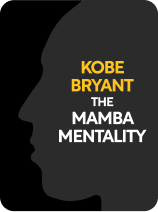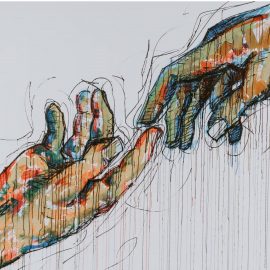

This article is an excerpt from the Shortform book guide to "The Mamba Mentality" by Kobe Bryant. Shortform has the world's best summaries and analyses of books you should be reading.
Like this article? Sign up for a free trial here .
What is Kobe Bryant’s advice on how to be persistent in The Mamba Mentality? Why is persistence such an important part of playing sports?
Learning how to be persistent is one of the most important skills in being an athlete. Being persistent means working hard and never giving up, no matter the obstacle.
Keep reading to find out how to be persistent, and why it matters.
How to Be Persistent No Matter What
For Kobe Bryant, persistence in sports was key to success. Many of the greatest achievements are hard-won. Regardless of your effort and preparation, obstacles are nearly inevitable—but they are not insurmountable. The way in which you tackle challenges on the road to greatness will determine whether you ultimately make it. The Mamba Mentality explains how to be persistent.
Overcome Injuries
Despite careful training and conditioning, Kobe faced several injuries during his 20-year career—and he approached each injury as a challenge to conquer and a lesson in how to be persistent.
Find Creative Ways to Bounce Back From a Setback
During the second game of the 2000 NBA Finals, Kobe suffered the worst sprained ankle of his professional career. However, he found a way to work around it: Kobe figured out which ways he could still move and how much force he could put on his ankle, and he adjusted his game to accommodate it. Kobe always planned and trained strategically so that he could dictate how he played on the court—instead of allowing the defense to force him into situations he didn’t want—and now that was more important than ever. After missing Game 3 of the Finals, Kobe was able to return for the rest of the series and maintain the play control that enabled him not only to play through his injury, but to win his first NBA championship. For Kobe Bryant, persistence in sports helped propel him to success.
After getting through the Finals, Kobe knew the injury would prevent him from playing much during the off-season. He needed something to rebuild his ankle strength and maintain his conditioning for the following season. After doing some research, he found that the solution was tap dancing. Kobe hired an instructor and spent the summer at a tap dancing studio, which strengthened his ankle while also improving his foot speed and rhythm. The benefits of his unorthodox recovery endured throughout his career.
Work Around Injuries and Limitations
For Kobe Bryant, persistence in sports meant overcoming frequent injuries. Kobe hurt his finger during a game in 2009, and an X-ray revealed that it was fractured. Kobe’s immediate response was to ask his trainer to tape it up and send him back into the game. Although the trainer was incredulous, Kobe’s attitude toward injuries was that if it couldn’t get worse, he might as well play. From then on, every time Kobe was on the court—whether in a game or during practice—he played with a splint on his finger. The splint allowed Kobe to play through the pain, because he knew that his finger was protected from some of the impact.
In addition to the splint, Kobe’s fractured finger forced him to make another adjustment: He had to change the way he shot the ball. Throughout his career, Kobe shot off of his pointer and middle fingers. With his pointer finger injured, he had to alter his form so that the ball released from his middle finger. Kobe spent days shooting thousands of baskets in order to internalize and automate his new shooting form. And, at the end of that season, the Lakers went on to win another championship, and viewed it as a lesson for how to be persistent.
Push Through Physical and Psychological Challenges
In the final three minutes of a game against the Golden State Warriors, Kobe tore his Achilles tendon. As with his prior injuries, Kobe initially tried to walk on it and determine if he could still play, but he quickly realized that was out of the question. As soon as he got to the locker room, Kobe began talking to his trainer and a surgeon about his options. The surgeon—who was also a minority owner of the Lakers—told Kobe about a new, promising procedure, but he would have to have surgery the following day, before scar tissue could form. Kobe immediately agreed.
Kobe faced a mental and physical battle as he recovered from his injury. Before tearing his Achilles, Kobe had noticed his body wearing down, and he knew he had to start thinking about retirement. However, after his injury, the public and the media speculated that Kobe might not be able to return—and that made him determined to recover and continue his career. Kobe refused to let an injury dictate when he would retire, and continued learning how to be persistent.

———End of Preview———
Like what you just read? Read the rest of the world's best book summary and analysis of Kobe Bryant's "The Mamba Mentality" at Shortform .
Here's what you'll find in our full The Mamba Mentality summary :
- How Kobe Bryant was able to play and dominate the best players
- Why Kobe took up tap dancing for a summer
- How reading the referee's handbook helped Kobe improve his game






